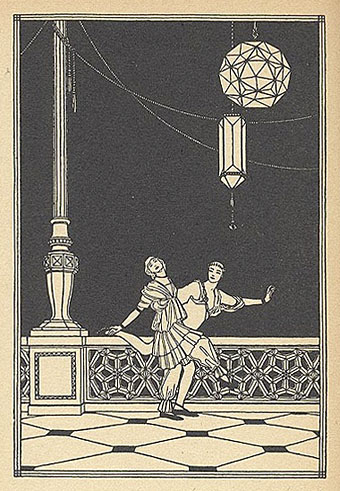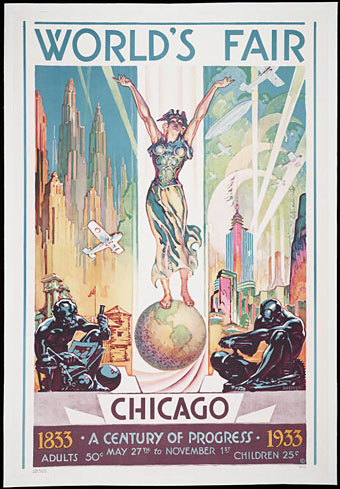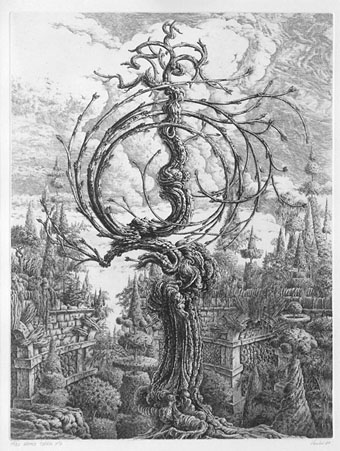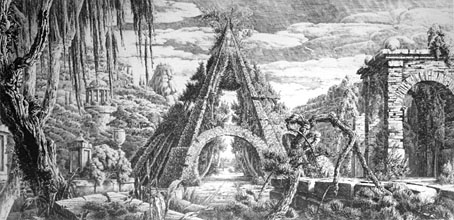Books-A-Million
| The Unimaginable Mathematics of Borges’ Library of Babel.
Category: {architecture}
Architecture
The art of Claude Fayette Bragdon, 1866–1946
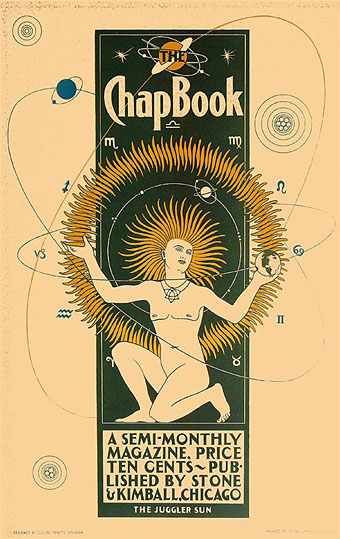
The Juggler Sun (1895).
On the shortest day of the year it seems fitting to post a picture of the sun and hope that in 2009 the clouds clear long enough for us Brits to see more than a month of it. Claude Fayette Bragdon’s poster is a remarkably stylised work for 1895 and might easily have been produced twenty or more years later. The Chap-Book was a periodical which included Bragdon among its illustrators although none of the cover designs to be found online are this striking. Bragdon wasn’t only an illustrator, however.
A man of many talents, Claude Fayette Bragdon (1866–1946) was an architect, artist, writer, philosopher, and stage designer. Bragdon’s work in these varied fields interrelated and overlapped, tied together by his theosophical belief in creating and communicating beauty. After a successful career as an architect in Rochester, NY, Bragdon entered the world of stage design in 1919, at the age of 53, by consenting to design a traveling production of Hamlet for actor-producer and personal friend Walter Hampden. Bragdon’s arrival in the world of theater came at a time when significant changes in staging techniques were on the horizon. (More.)
I usually celebrate polymathy but in Bragdon’s case his varied interests seem to have deprived us of more work by a unique illustrative talent. The indispensable VTS has further examples of his clean style from a 1915 treatise on architecture and design, Projective Ornament. It was increasingly common during this period to regard ornamentation in architecture as a 19th century evil to be purged from all future buildings, a concept expressed most notoriously by Adolf Loos in his 1908 essay, Ornament and Crime. Bragdon engaged with the argument by proposing that architects put aside historical and natural pastiche and look to geometry for a new style of decoration. His illustrations in Projective Ornament are beautifully done and some (like the one below) might almost be the work of an Art Deco illustrator such as George Barbier.
Elsewhere on { feuilleton }
• The illustrators archive
Previously on { feuilleton }
• The Decorative Age
• Images of Nijinsky
Exposition cornucopia
Poster by Glen C Sheffer (1933).
The image galleries at Yale University’s Beinecke Rare Book & Manuscript Library have been garnering justifiable attention recently for the quality of their collection. Among the groupings, the World’s Fairs and the Landscapes of the Modern Metropolis section immediately caught the attention of this exposition and world’s fair fan. An amazing collection of posters, exposition booklets, photos and plans, many of which augment the subjects of previous postings including the 1900 Exposition Universelle. A very brief and cursory selection follows.
Chelsea’s bohemians rage in fight to save New York landmark’s soul
The art of François Houtin
Grand Totem n°1 (2001).
From a collection of etching of imaginary gardens by the French artist at Galleria del Leone.
Pyramide n°1 (1991).
Elsewhere on { feuilleton }
• The etching and engraving archive

